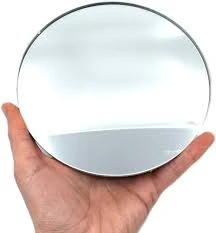

The Price of Reflective Glass An Overview
Reflective glass, known for its ability to reflect light while maintaining visibility, has gained significant popularity in various architectural and design applications. From skyscrapers to residential homes, reflective glass not only enhances aesthetic appeal but also provides energy efficiency and privacy. However, the price of reflective glass can vary significantly based on factors such as type, thickness, production methods, and market trends. In this article, we will explore these aspects and analyze what drives the price of reflective glass.
Understanding Reflective Glass
Reflective glass is essentially coated glass that has a thin layer of metal or other reflective materials incorporated into its surface. This coating allows the glass to reflect solar radiation, thereby minimizing heat transfer. There are various types of reflective glass, including low-E (low emissivity) glass, which provides enhanced insulation, and tinted glass, which offers a darker appearance while reflecting sunlight.
The primary use of reflective glass is in commercial and residential buildings where energy efficiency and aesthetic appeal are essential. For instance, large commercial buildings frequently employ reflective glass in their façades to reduce cooling costs and enhance the overall visual complexity of the structure.
Factors Influencing the Cost of Reflective Glass
1. Type and Quality The type of reflective glass significantly affects its price. High-performance glasses, such as low-E reflective glass, cost more due to their advanced features and benefits. In contrast, basic reflective glass without special coatings may be more affordable but will not offer the same level of efficiency.

2. Thickness and Size The thickness of the glass also plays a vital role in determining the price. Thicker glass generally provides more durability and strength, which can make it more expensive. Additionally, larger panels of reflective glass require more raw materials and complex transportation, thus increasing the overall cost.
3. Production Methods The manufacturing process impacts the cost significantly. Glass can be produced using various methods, such as float glass, which involves refining molten glass into a flat surface. Advanced coatings that enhance performance, like sputtering, can also add to the production costs. The intricacies involved in coating and handling reflective glass contribute to its price tag.
4. Market Demand and Trends The demand for reflective glass can fluctuate based on architectural trends and economic conditions. During periods of economic growth, the demand is likely to increase, resulting in higher prices due to limited supply. Conversely, a slowdown in new construction projects can lead to excess supply, driving prices down.
5. Geographical Location Prices can also vary based on geographical factors. In regions where raw materials are abundant, costs may be lower compared to areas that rely heavily on imports. Local regulations concerning building codes and energy efficiency standards further affect the price of reflective glass.
Conclusion
The price of reflective glass is influenced by several factors, including its type, thickness, production methods, and market demand. As the demand for energy-efficient and aesthetically pleasing building materials continues to grow, it is essential for consumers and architects to consider these influences when budgeting for projects.
In an era increasingly focused on sustainable building practices, reflective glass presents an appealing option for both commercial and residential applications, balancing functionality with beauty. As technology continues to evolve, we may see innovations in reflective glass that could further affect its pricing structure. Ultimately, understanding the dynamics of reflective glass pricing empowers stakeholders to make informed decisions that align with their aesthetic and energy-efficiency goals.